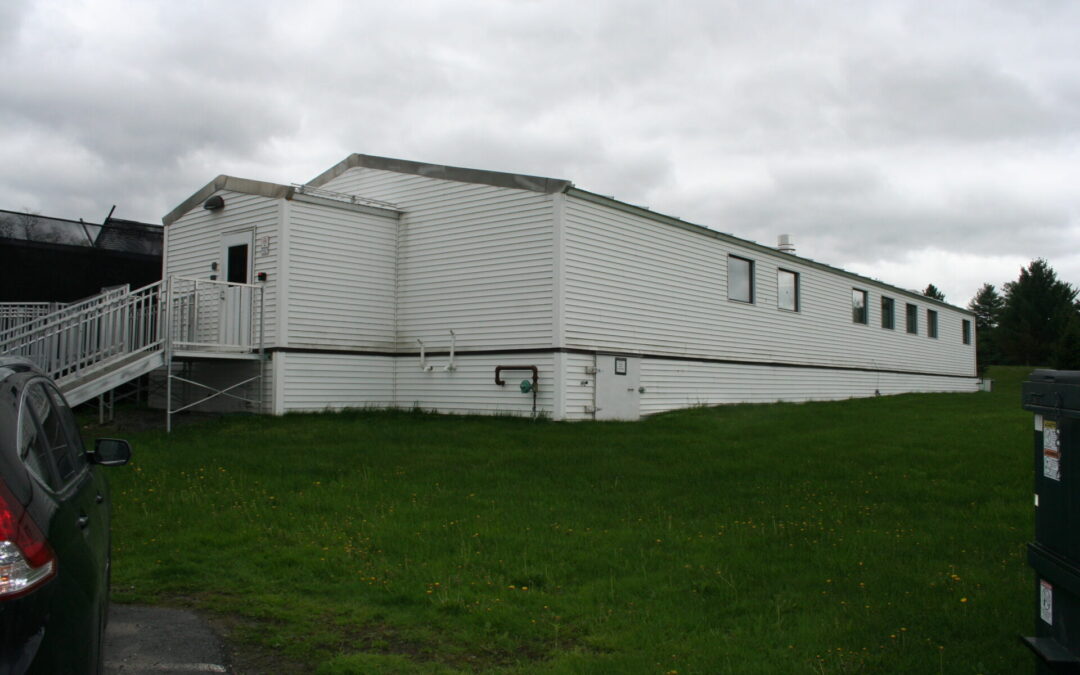The Vermont Department for Children and Families has plans to develop five new youth facilities to replace Essex’s Woodside Juvenile Rehabilitation Center, which shuttered in 2020 amid a dwindling inmate population and reports of abuse by staff.
One of them will reuse a pair of linked FEMA trailers that, following the Hurricane Irene-induced closure of the Vermont State Hospital, previously served as a “temporary” locked residence for patients in the custody of the Department of Mental Health. When its residents finally moved to a new facility built on Woodside’s former grounds in 2023, it already had outlived its intended lifespan by seven years.
The state plans to reopen the former Middlesex Therapeutic Community Residence – again, temporarily – as soon as January or as late as March. It’ll host four beds. DCF aims to have a permanent home for its “short-term secure stabilization and treatment” program by 2026.
The Joint Legislative Justice Oversight Committee heard the news on Oct. 16, when DCF presented an overview of its latest efforts to beef up what it calls its “high-end system of care.” From “mental health emergency beds” to “intensive residential” programming, it currently has licensed capacity for 155 juvenile placements, but since Woodside’s closure, it has reportedly struggled to accommodate youths deemed especially violent.
Lately, DCF’s workers have declared a state of emergency, and department officials have begun scrambling for solutions. They assembled their current plan without receiving feedback from a legislatively mandated working group meant to include families, adolescents, and advocacy organizations.
In the spring, lawmakers instructed DCF to convene such stakeholders to “provide regular input on the planning, design, development, and implementation” of upcoming facilities and programming for justice-involved youth. But the law didn’t set a strict deadline for the group’s formation or spell out exactly how much of DCF’s decision-making could take place before that point. According to Commissioner Chris Winters, the group would hold its first meeting on Oct. 26.
DCF has already picked locations for four of the five facilities. In response to the department’s request for proposals for adolescent residential programming, the Brattleboro Retreat submitted a successful bid to house up to 15 adolescents in a repurposed inpatient unit. DCF also expects to turn a property in Newbury into a “short-term secure treatment” facility, but the proposal hinges on a forthcoming decision by the Vermont Supreme Court, which will determine whether local zoning administrators – who’ve characterized the project as a prison, not a group home as claimed – have the power to block it.
Next summer, a new “staff-secure crisis stabilization” program with two to three beds will take over a portion of the building in Brattleboro that houses the Windham County Sheriff’s Office. The conversion will cost an estimated $1.3 million and allow for stays up to six months. According to Deputy Commissioner Aryka Radke, the sheriff’s officers won’t staff the program, but DCF has contracted them to help out, depending on their availability, when the need arises.
The permanent facility that will replace Middlesex doesn’t yet have a location. Earlier this year, DCF hired a consultant to draft a request for qualifications for a design-build contract, and three developers responded. One of them, ultimately, will construct and own the building, which may sit on private or public land, and will lease it to DCF, according to testimony.
Not all of the children served by DCF’s new additions to its high-end system of care will be justice-involved. Officials described mental health treatment as an equally pressing need.
“We have to have a system of therapeutic treatment with providers at a variety of levels of care,” Winters said. “And it’s not just one facility. That can’t serve all of the needs that we have among Vermont’s children.”
DCF’s presentation took place shortly after Vermont’s largest weekly newspaper published a major investigative story about violence and neglect at Woodside. It hung over the discussion.
“I’m sure many of you may have read the Seven Days article by Joe Sexton yesterday regarding Woodside and some of the failures there,” Sen. Dick Sears said. “But it doesn’t lessen the fact that we don’t have a high-end system of care at this point.”
DCF would adopt a different approach this time, Winters pledged. The new programs would offer “appropriate, trauma-informed treatment and educational supports to go with it.”
Winters also argued that, in the future, DCF shouldn’t operate its own locked facilities. In August, it released two requests for proposals in the hope of contracting private providers, but as of Oct. 16, it had yet to receive any responses.
According to the Vermont State Employees Association, the union that represents DCF workers, state officials need to move more quickly to address a “tsunami” of violence by Vermont’s juvenile offenders. Executive Director Steve Howard urged Gov. Scott to deploy the National Guard to handle the problem.
“This is a public safety crisis,” Howard said. “Let me be clear: we cannot wait six years, six months, six weeks, six hours, or six minutes for a solution or even some relief. We need action now.”
Sen. Sears proposed reserving a wing of an existing adult correctional facility for adolescents, suggesting that the conversion could take place in a matter of hours or days. Howard received the idea favorably.
“It’s a thought,” said Rep. Alice Emmons, the committee chair.
But Matthew Bernstein, Vermont’s Child, Youth, and Family Advocate, warned of the dangers of haste.
“We need to have a vision of success,” Bernstein said. “What I’m hearing now is urgency – frankly, panic. That’s justified, but I just want to label that because we’re not going to create good policy if that’s where we dwell.”
In Bernstein’s view, DCF hadn’t collected enough data about adolescent mental health in Vermont.
“We have to fit the treatment system to youth needs,” he pressed. “Not the other way around, which is kind of what we have right now.”
Bernstein mentioned that he’d visited the temporary facility in Middlesex. By his account, it’s “not in good shape.”
DCF plans to spend between $600,000 and $1 million to fix it up. The department will shift funds appropriated for the delayed Newbury project to cover a portion of the bill.
Bernstein advised investing in upstream services for at-risk youth in the future.
“There’s two ways of remedying a need for beds,” he said. “If they can stay in their homes, that also creates a bed.”

